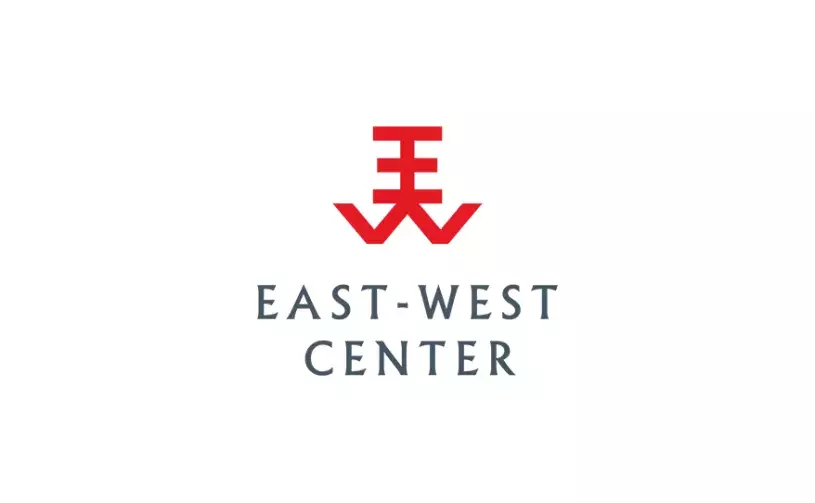Error message

By Sherry P. Broder
HONOLULU (August 28, 2019)—Since the 1950s when plastics were first produced, more than 150 million tons of plastic debris have accumulated in the world’s oceans. Marine plastic litter includes large items, such as nets, floats, and other fishing debris, plus tiny microplastic particles that are pervasive and practically invisible to the naked eye—but equally harmful.
The International Union for Conservation of Nature (IUCN) estimates that more than 35 percent of all the primary plastics that end up in the oceans are microplastics and that most of these tiny particles originate from textiles. Ingestion of plastic particles by fish, bivalves, and other seafood is particularly concerning for humans, in part because little is known about the pesticides that are attracted to plastics and the chemical behavior of plastic additives.
Evidence of plastic litter throughout the Arctic
Plastic debris has been found throughout the Arctic marine environment—including shorelines, sea ice, surface and subsurface waters, the deep-sea floor, ocean sediments, and the atmosphere. A study that was prepared for the 11th Arctic Council Ministerial Meeting in May 2019—Protection of the Arctic Marine Environment Desktop Study on Marine Litter, including Microplastics in the Arctic—identified evidence that marine litter, including microplastics, enters the oceans from coastlines, rivers, tides, and marine sources. Plastic debris can be carried into the Arctic from very distant sources by wind and ocean currents.
The study focused on areas where human activities are concentrated, such as the Barents, Norwegian, and Bering Seas, and on particular species—such as seabirds—that had already been the subject of research. There is less information on the central Arctic and the Arctic coastal areas in Siberia, Arctic Alaska, mainland Canada, and the Canadian Arctic Archipelago. Nevertheless, the study found that marine litter, including microplastics, is found in all Arctic marine environments, from beaches and sea ice to the deep-sea floor.
Discards, lost items, and dumping in the fishing industry are major sources of large plastic debris. Preliminary analysis estimates that the majority of the litter on Arctic beaches and the sea floor originates from the fishing industry. One study from east of the Svalbard Archipelago in the Norwegian Arctic found a 20-fold increase in marine litter in just 10 years. The United Nations’ International Maritime Organization recently adopted an action plan to consider making the marking of fishing gear mandatory.
Studies have found that there are high concentrations of plastic (hundreds of thousands of pieces per square kilometer) in the northernmost and easternmost areas of the Greenland and Barents seas. Referring to the poleward branch of the Termohaline Circulation, a current that transfers floating debris from the North Atlantic, these seas have been described as “a dead end for this plastic conveyor belt.” The nature of the particle shapes and sizes points to a distant source, confirming long-term model simulations that suggest that microplastics are transported to the Arctic over long distances. Massive Siberian river discharges contribute significant amounts of plastic to the Arctic Ocean.
Studies and discussion, but little action
The UN Environment Assembly (UNEA) has set into motion enhanced global initiatives to reduce or eliminate marine plastic litter and microplastics. At the UNEA-3 meeting in December 2017, member states formed an Ad-Hoc Open-Ended Expert Group to present options for achieving this goal.
At the UNEA-4 meeting in March 2019, countries considered several resolutions to halt plastic pollution. Norway, Japan, and Sri Lanka sought to strengthen international cooperation on marine plastic litter and microplastics, including a possible new agreement that would be legally binding. India proposed the phase-out of single-use plastics worldwide. Neither of these resolutions was adopted, but the mandate of the Expert Group was extended to continue its work and report on progress at UNEA-5 in February 2021.
Back in 1998, the Arctic Council adopted a Regional Programme of Action for the Protection of the Arctic Marine Environment from Land-Based Activities. In 2005, the Council adopted an Arctic Marine Strategic Plan that provides a framework for protecting Arctic marine and coastal ecosystems. The Arctic Council’s plan focuses on improving and expanding data collection and scientific knowledge of the Arctic, Arctic-specific marine litter sources and pathways, and the effects of marine litter on the Arctic marine environment.
The 2017 Fairbanks Declaration of the Arctic Council Ministerial noted “with concern the increasing accumulation of marine debris in the Arctic, its effects on the environment, and its impacts on Arctic communities,” and decided to “assess the scope of the problem and contribute to its prevention and reduction, and also to continue efforts to address growing concerns relating to the increasing levels of microplastics in the Arctic and potential effects on ecosystems and human health.”
In addressing the problem of plastics in the Arctic, universal terms of reference can help make sure that the data collected are fully accessible. In March 2019, the Joint Group of Experts on the Scientific Aspects of Marine Environmental Protection (GESAMP) issued a report on Guidelines for the Monitoring and Assessment of Plastic Litter that standardizes definitions and methods for collecting data and should facilitate data sharing and protect data integrity.
The study prepared for the 2019 Arctic Council Ministerial Meeting reported the following major findings:
- The presence of marine litter, including microplastics, in the Arctic Ocean is connected to human activities occurring within and outside the Arctic region.
- Despite the lack of estimates of marine litter input linked to different human activities occurring in the Arctic region, the analysis of existing coastal and seafloor litter data identifies fisheries-related activities as a major source in the Arctic. Other sea-based activities such as aquaculture, passenger and goods shipping, and oil and gas exploration constitute additional sea-based sources.
- Coastal litter data point to deficient waste and wastewater management systems in some coastal Arctic communities as an important land-based source of marine litter.
The study recommended that formal monitoring programs be established that cover all the sources, pathways, compartments, and impacts of marine litter and microplastics in the Arctic. These studies will be useful for the development of a Regional Action Plan.
As the 2019 study clearly shows, plastics are now being found in the most remote places on earth, in all kinds of marine life, and most recently in humans. Scientists do not fully understand how plastics, and particularly microplastics, affect marine animals or the human body, but plastics will remain a matter of great concern, not only in the Arctic, but also for the environment worldwide and for human health.
###
Sherry P. Broder is an Adjunct Senior Fellow at the East-West Center and the founder and Executive Director of the Jon Van Dyke Institute of International Law and Justice at the University of Hawai‘i at Mānoa. She can be reached at [email protected]. This East-West Wire is based on her presentation at the ninth North Pacific Arctic Conference, held at the East-West Center in August 2019.
Download a pdf version of this Wire article.
The East-West Wire is a news, commentary, and analysis service provided by the East-West Center in Honolulu. All or any part of the Wire content may be used by media with attribution to the East-West Center or the person quoted. To receive Wire articles via email, subscribe here. For links to all East-West Center media programs, fellowships and services, see EastWestCenter.org/Journalists.
The full list of East-West Wires produced by the Research Program is available on the East-West Center website at EastWestCenter.org/Research-Wire. For more on the East-West Center Research Program, see EastWestCenter.org/Research.
The East-West Center promotes better relations and understanding among the people and nations of the United States, Asia, and the Pacific through cooperative study, research, and dialogue.
Series editors:
Derek Ferrar
[email protected]
Sidney B. Westley
[email protected]
The views expressed are those of the author and do not necessarily reflect the policy or position of the East-West Center or any organization with which the author is affiliated.
By Sherry P. Broder
HONOLULU (August 28, 2019)—Since the 1950s when plastics were first produced, more than 150 million tons of plastic debris have accumulated in the world’s oceans. Marine plastic litter includes large items, such as nets, floats, and other fishing debris, plus tiny microplastic particles that are pervasive and practically invisible to the naked eye—but equally harmful.
The International Union for Conservation of Nature (IUCN) estimates that more than 35 percent of all the primary plastics that end up in the oceans are microplastics and that most of these tiny particles originate from textiles. Ingestion of plastic particles by fish, bivalves, and other seafood is particularly concerning for humans, in part because little is known about the pesticides that are attracted to plastics and the chemical behavior of plastic additives.
Evidence of plastic litter throughout the Arctic
Plastic debris has been found throughout the Arctic marine environment—including shorelines, sea ice, surface and subsurface waters, the deep-sea floor, ocean sediments, and the atmosphere. A study that was prepared for the 11th Arctic Council Ministerial Meeting in May 2019—Protection of the Arctic Marine Environment Desktop Study on Marine Litter, including Microplastics in the Arctic—identified evidence that marine litter, including microplastics, enters the oceans from coastlines, rivers, tides, and marine sources. Plastic debris can be carried into the Arctic from very distant sources by wind and ocean currents.
The study focused on areas where human activities are concentrated, such as the Barents, Norwegian, and Bering Seas, and on particular species—such as seabirds—that had already been the subject of research. There is less information on the central Arctic and the Arctic coastal areas in Siberia, Arctic Alaska, mainland Canada, and the Canadian Arctic Archipelago. Nevertheless, the study found that marine litter, including microplastics, is found in all Arctic marine environments, from beaches and sea ice to the deep-sea floor.
Discards, lost items, and dumping in the fishing industry are major sources of large plastic debris. Preliminary analysis estimates that the majority of the litter on Arctic beaches and the sea floor originates from the fishing industry. One study from east of the Svalbard Archipelago in the Norwegian Arctic found a 20-fold increase in marine litter in just 10 years. The United Nations’ International Maritime Organization recently adopted an action plan to consider making the marking of fishing gear mandatory.
Studies have found that there are high concentrations of plastic (hundreds of thousands of pieces per square kilometer) in the northernmost and easternmost areas of the Greenland and Barents seas. Referring to the poleward branch of the Termohaline Circulation, a current that transfers floating debris from the North Atlantic, these seas have been described as “a dead end for this plastic conveyor belt.” The nature of the particle shapes and sizes points to a distant source, confirming long-term model simulations that suggest that microplastics are transported to the Arctic over long distances. Massive Siberian river discharges contribute significant amounts of plastic to the Arctic Ocean.
Studies and discussion, but little action
The UN Environment Assembly (UNEA) has set into motion enhanced global initiatives to reduce or eliminate marine plastic litter and microplastics. At the UNEA-3 meeting in December 2017, member states formed an Ad-Hoc Open-Ended Expert Group to present options for achieving this goal.
At the UNEA-4 meeting in March 2019, countries considered several resolutions to halt plastic pollution. Norway, Japan, and Sri Lanka sought to strengthen international cooperation on marine plastic litter and microplastics, including a possible new agreement that would be legally binding. India proposed the phase-out of single-use plastics worldwide. Neither of these resolutions was adopted, but the mandate of the Expert Group was extended to continue its work and report on progress at UNEA-5 in February 2021.
Back in 1998, the Arctic Council adopted a Regional Programme of Action for the Protection of the Arctic Marine Environment from Land-Based Activities. In 2005, the Council adopted an Arctic Marine Strategic Plan that provides a framework for protecting Arctic marine and coastal ecosystems. The Arctic Council’s plan focuses on improving and expanding data collection and scientific knowledge of the Arctic, Arctic-specific marine litter sources and pathways, and the effects of marine litter on the Arctic marine environment.
The 2017 Fairbanks Declaration of the Arctic Council Ministerial noted “with concern the increasing accumulation of marine debris in the Arctic, its effects on the environment, and its impacts on Arctic communities,” and decided to “assess the scope of the problem and contribute to its prevention and reduction, and also to continue efforts to address growing concerns relating to the increasing levels of microplastics in the Arctic and potential effects on ecosystems and human health.”
In addressing the problem of plastics in the Arctic, universal terms of reference can help make sure that the data collected are fully accessible. In March 2019, the Joint Group of Experts on the Scientific Aspects of Marine Environmental Protection (GESAMP) issued a report on Guidelines for the Monitoring and Assessment of Plastic Litter that standardizes definitions and methods for collecting data and should facilitate data sharing and protect data integrity.
The study prepared for the 2019 Arctic Council Ministerial Meeting reported the following major findings:
- The presence of marine litter, including microplastics, in the Arctic Ocean is connected to human activities occurring within and outside the Arctic region.
- Despite the lack of estimates of marine litter input linked to different human activities occurring in the Arctic region, the analysis of existing coastal and seafloor litter data identifies fisheries-related activities as a major source in the Arctic. Other sea-based activities such as aquaculture, passenger and goods shipping, and oil and gas exploration constitute additional sea-based sources.
- Coastal litter data point to deficient waste and wastewater management systems in some coastal Arctic communities as an important land-based source of marine litter.
The study recommended that formal monitoring programs be established that cover all the sources, pathways, compartments, and impacts of marine litter and microplastics in the Arctic. These studies will be useful for the development of a Regional Action Plan.
As the 2019 study clearly shows, plastics are now being found in the most remote places on earth, in all kinds of marine life, and most recently in humans. Scientists do not fully understand how plastics, and particularly microplastics, affect marine animals or the human body, but plastics will remain a matter of great concern, not only in the Arctic, but also for the environment worldwide and for human health.
###
Sherry P. Broder is an Adjunct Senior Fellow at the East-West Center and the founder and Executive Director of the Jon Van Dyke Institute of International Law and Justice at the University of Hawai‘i at Mānoa. She can be reached at [email protected]. This East-West Wire is based on her presentation at the ninth North Pacific Arctic Conference, held at the East-West Center in August 2019.
Download a pdf version of this Wire article.
The East-West Wire is a news, commentary, and analysis service provided by the East-West Center in Honolulu. All or any part of the Wire content may be used by media with attribution to the East-West Center or the person quoted. To receive Wire articles via email, subscribe here. For links to all East-West Center media programs, fellowships and services, see EastWestCenter.org/Journalists.
The full list of East-West Wires produced by the Research Program is available on the East-West Center website at EastWestCenter.org/Research-Wire. For more on the East-West Center Research Program, see EastWestCenter.org/Research.
The East-West Center promotes better relations and understanding among the people and nations of the United States, Asia, and the Pacific through cooperative study, research, and dialogue.
Series editors:
Derek Ferrar
[email protected]
Sidney B. Westley
[email protected]
The views expressed are those of the author and do not necessarily reflect the policy or position of the East-West Center or any organization with which the author is affiliated.
East-West Wire
News, Commentary, and Analysis
The East-West Wire is a news, commentary, and analysis service provided by the East-West Center in Honolulu. Any part or all of the Wire content may be used by media with attribution to the East-West Center or the person quoted. To receive East-West Center Wire media releases via email, subscribe here.
For links to all East-West Center media programs, fellowships and services, see www.eastwestcenter.org/journalists.







